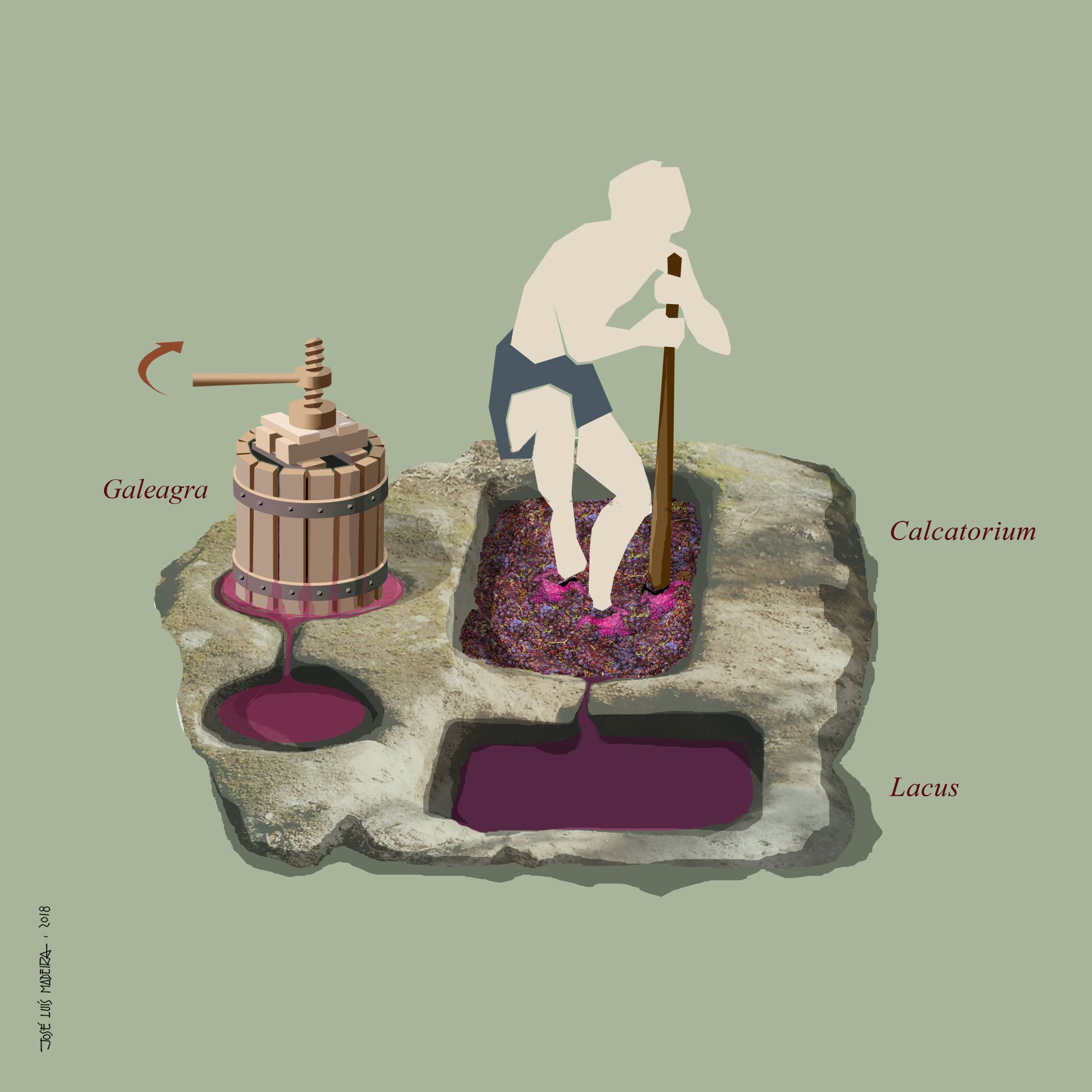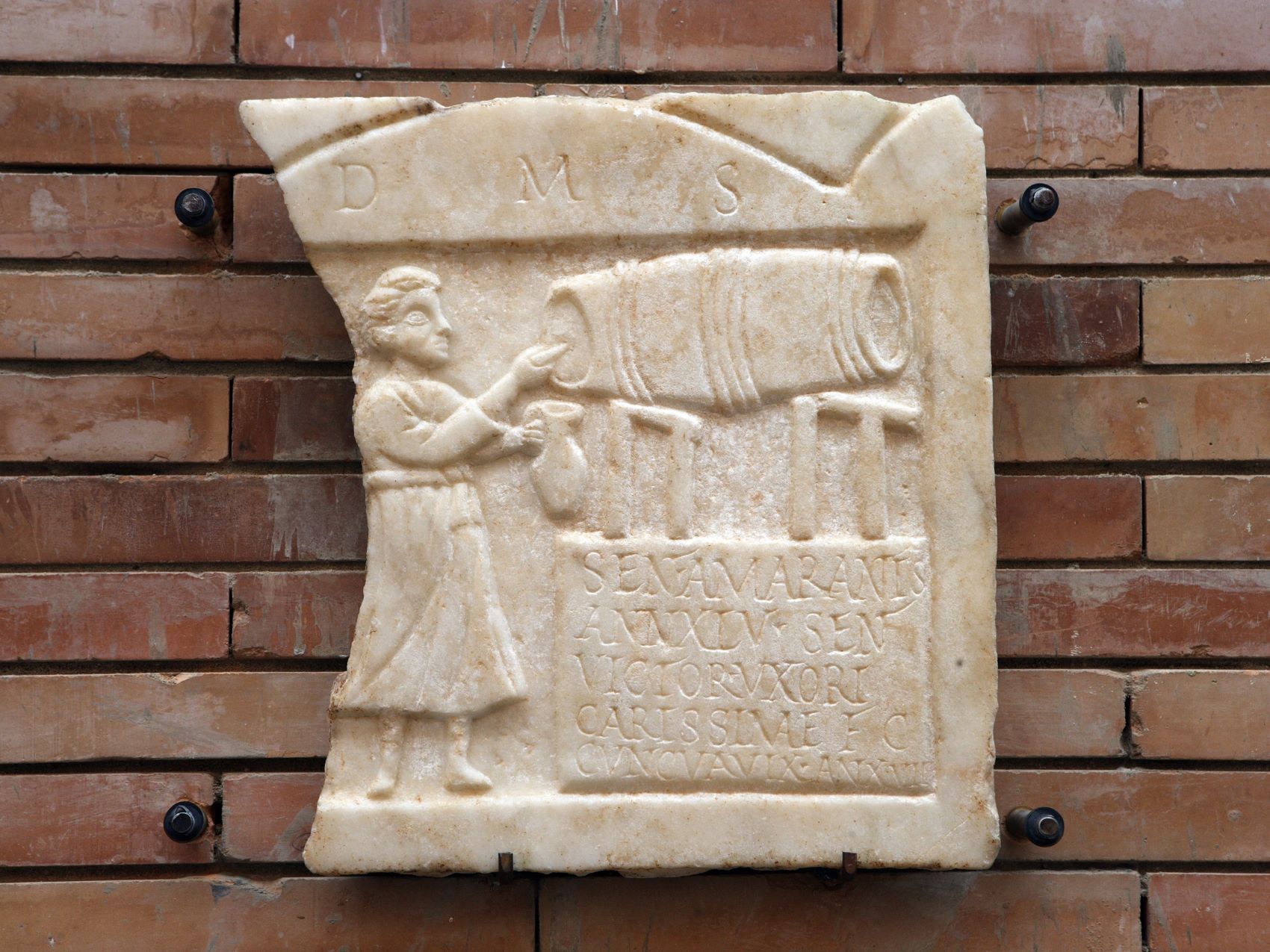
Archaeology of wine in Roman Lusitania
Phoenician traders from the region of what is now Lebanon probably brought the first wine to the Iberian Peninsula in the 9th-8th century B.C. After this, the first vines appeared in the Phoenician and Greek colonies founded in the southern coast of Iberia, particularly in what is now Portuguese territory. There is recorded evidence of the existence of grapevines (vitis vinifera), more specifically of grape seeds, in pre- and proto-historical archaeological contexts in Portugal. However, although these remains indicate local consumption of grapes, they do not provide evidence of wine production in periods before the 1st millennium B.C.
The expansion of viticulture and winemaking probably occurred after the Roman conquest of Hispania. In the first stage, in the 2nd century and first half of the 1st century B.C., wine was imported from Italia to supply the Roman armies on campaign. In the second half of the 1st century B.C., the southern territories of Hispania began producing their own wine, and they also manufactured their own amphorae (the primary containers for the transportation of wine by sea) to market it. They even began to compete within the Mediterranean market, first with the Italic, and then the Gallic wines. In this period of the late republic, consumers were primarily the Roman soldiers, to which were added Italic emigrants and indigenous elites.
Reconstitution of a mill dug into the rock. These emerged in Roman times, with the same type of wine mills surviving throughout medieval times. Source: José Luís Madeira (FLUC)
In the 1st century A.D., winegrowing (vinea) spread and gained a greater scale, as did winemaking, throughout most of the Portuguese territory. In this period, the regions north of the river Douro began producing their own wine (about five centuries after the appearance of the first grapevines in the southern regions of Portugal and Spain), at the same time that they consumed the wine produced in the southern regions in large quantities. In this context, throughout the 1st century A.D., the important wine trade of the Roman Empire waned, and the wine-producing regions of Hispania gained importance. In the 1st century A.D., in the archaeological contexts of the current Portuguese territory, the dominance of the Hispanic wines, particularly those from Baetica (now the Spanish Andalusia), is clear and undeniable, both in the southern coastal regions and the northern interior ones. In the 2nd and 3rd centuries, given the widespread growth of vineyards, the consumption of locally and regionally produced wine was probably the norm. Amphorae were then replaced with wineskins, barrels and smaller flat-bottomed earthenware vessels.
In the 4th and 5th centuries, the last period of the Roman Empire, the wine produced in the eastern Mediterranean (and also in northern Africa) gained prominence. This wine, sometimes called by coeval authors vinum optimum, was presumably expensive, not only because of its excellent quality, but also due to its healing properties. In this period of late antiquity, its consumers were mostly the new urban elites of Christian converts. Widely marketed and produced in practically all the eastern Roman provinces (in Gaza and Ephesus, as well as in Syria, Cyprus and the Nile valley), this wine played an important part in church celebrations, especially the wine associated with the Holy Land.
Roman funerary epigraph of Sentia Amarantis, a tavern keeper. The deceased is depicted filling a jug of wine from a barrel or cask. Source: Archivo Fotográfico MNAR – Mérida
The classical authors are very vague about the process of winegrowing and winemaking in the westernmost part of the Roman Empire. We know from Polybius that wine was produced in Lusitania, although on a small scale, when the Romans arrived there. Strabo, in the early 1st century A.D., mentions in his Geographica that the peoples of the Iberian northwest drank beer since they didn’t have wine – “however, what they manage to get, they quickly consume, making a banquet with their relatives.” Given the lack of clear references, it has been fundamentally the task of archaeology to document this process. There are several archaeological indicators that can provide evidence of wine production and consumption in the Roman province of Lusitania: the finding of amphorae and dolia (large earthenware vessels used for storage, and in which the grape must fermented); the results of the paleoenvironmental analyses (with in situ identification of grape seeds) and the physical-chemical analyses of the residues inside the vessels; and also the small wine presses carved into the rock (calcatoria) where the grape must was crushed, and the remains of wine presses and cellars (cella vinaria). Thus, about two thousand years ago, Roman rule was responsible for the significant increase of vineyards and wine production in the what is now Portuguese territory.
Pedro C. Carvalho is an Associate Professor at the Faculty of Arts and Humanities of the University of Coimbra (UC) and an investigator of the Centre of Interdisciplinary Studies (CEIS20). He is also the Principal Investigator of the project “The historical village of Idanha-a-Velha: city, territory and population in ancient times (first century BC. – twelfth century AC) (2021-2024)”, financed by the FCT. He directed archaeological works carried out over two decades at the National Museum of Machado de Castro (Coimbra). He also directed archaeological excavations at various sites from Roman times, such as Orjais and Terlamonte (Covilhã), Castro de Avelans (Bragança). He has held university management positions and has been sub-director and chair of the Assembly of the Faculty of Arts and Humanities.



0 Comments